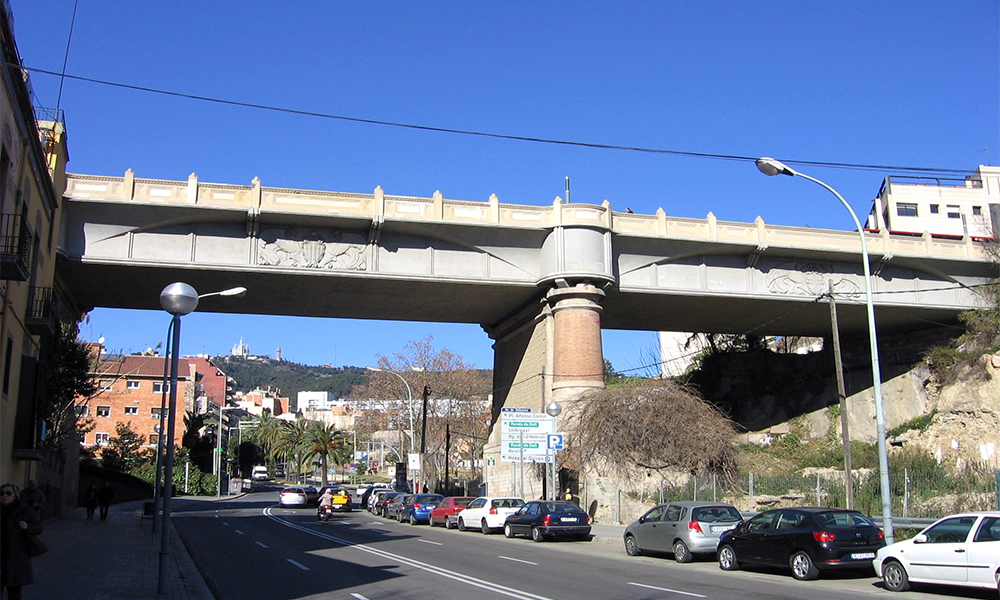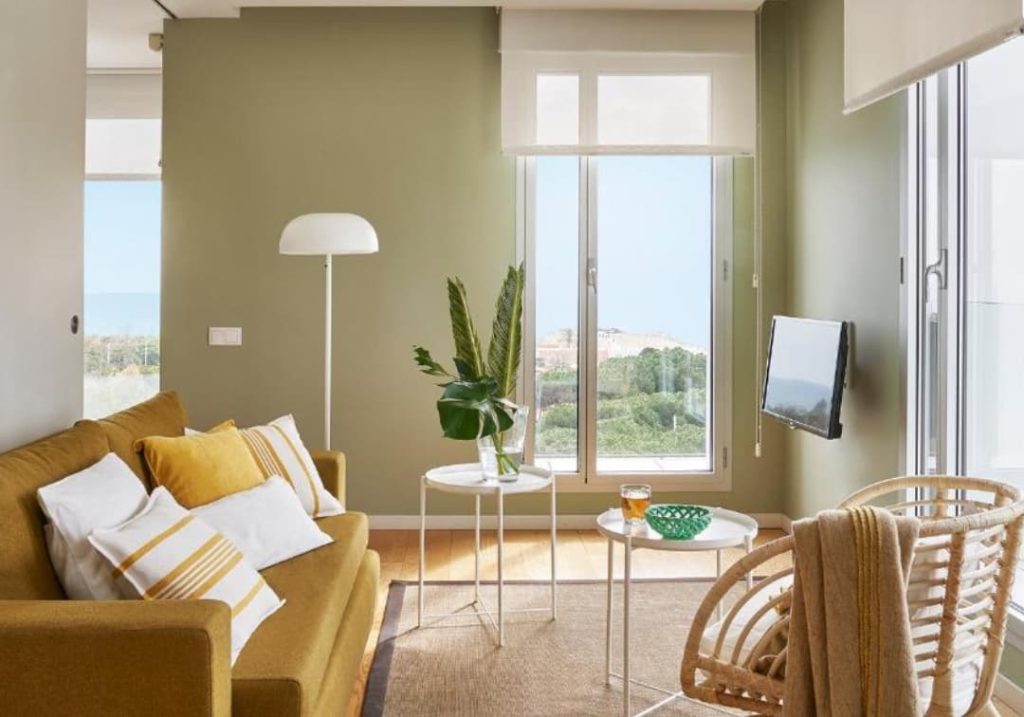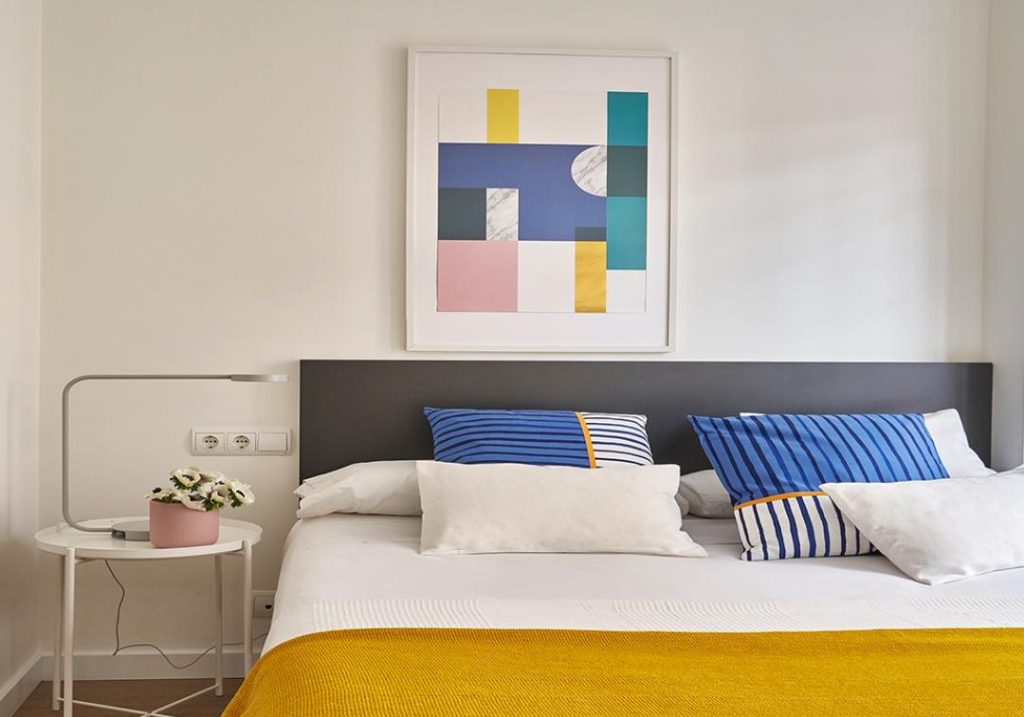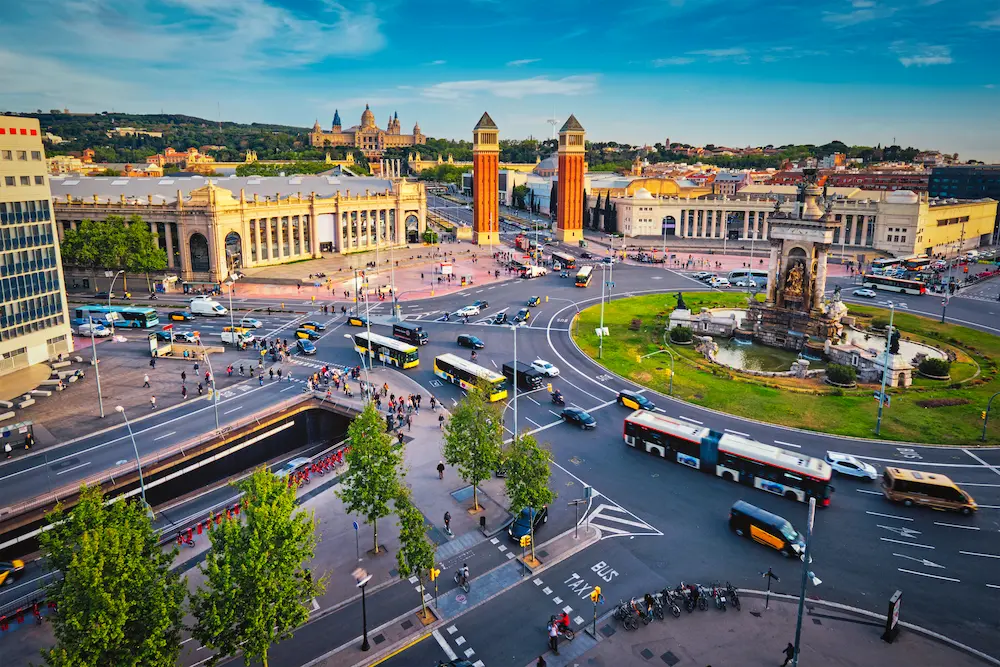Cada mes de agosto, los principales monumentos de Barcelona ceden el protagonismo a uno los grandes eventos del año en la ciudad: las fiestas de Gràcia. Durante más de una semana, las calles de este distrito barcelonés exhiben una decoración única gracias a la paciencia y dedicación de los vecinos, al tiempo que acogen infinidad de conciertos y propuestas de ocio. Ahora bien: ¿qué ver en Gràcia fuera de estas fechas?
Pese a que este no es uno de los lugares más turísticos de la capital catalana, te aseguramos que es mucho lo que hay que hacer en este antiguo pueblo, que contó con un ayuntamiento propio hasta 1897. Tradicional y moderno al mismo tiempo, Gràcia no solo es la meca hipster de Barcelona —con permiso de la calle del Parlament—, sino también un distrito bohemio y cosmopolita, capaz de seducir a cualquier viajero.
¿Quieres saber por qué? Si es así, no te pierdas estos lugares de visita obligada. ¡Te vamos a convencer!
CASA VICENS, UNA DE LAS PRIMERAS OBRAS DE GAUDÍ
Entre todas las obras de Gaudí en Barcelona, la Casa Vicens, situada en el número 24 de la calle de las Carolines, es la más antigua. Además, este fue el primer trabajo de una cierta envergadura del genial arquitecto de Reus. Erigida entre 1883 y construida durante cinco años, esta vivienda ajardinada combina el uso de la piedra, el ladrillo visto y una extensa gama de azulejos de varios colores. En ellos se refleja una clara influencia mudéjar y orientalista, muy en boga en aquellas fechas.
Las vallas, de hierro forjado, se inspiran directamente en la naturaleza y, concretamente, en el palmito, una palmera típica del Mediterráneo occidental. Las barandillas y las rejas son también de forja y son el preámbulo de los motivos de decoración modernista. En el interior, domina la madera tallada y policromada, a juego con el mobiliario. ¿Te apetece descubrirlo? Si es así, te gustará saber que esta casa está abierta al público desde noviembre de 2017.
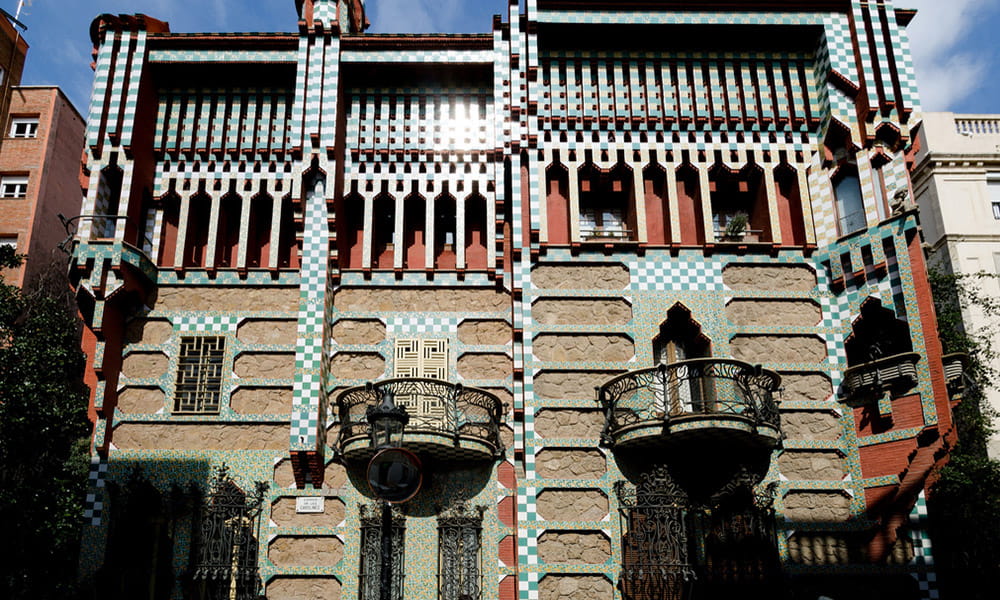
PARK GÜELL: NATURALEZA Y MODERNISMO
La Casa Vicens no es la única obra de Gaudí en Gràcia. Ni la más importante, ya que este privilegio corresponde al Park Güell, una gran ciudad jardín inacabada, emplazada en una de las laderas del monte Carmel. Construida entre los años 1900 y 1914, fue inaugurada como parque público en 1926 y posee más de 17 hectáreas de superficie, lo que la convierte en una de las mayores obras arquitectónicas del sur de Europa. En 1984, la UNESCO declaró al Park Güell Patrimonio de la Humanidad.
Si quieres visitarlo —algo que no nos cansamos de recomendar a todos aquellos que se alojan en nuestros apartamentos de vacaciones en Barcelona—, lo mejor es reservar tus entradas online. De este modo, evitarás hacer colas y el riesgo de quedarte sin poder acceder en el horario deseado, ya que la afluencia de visitantes al área monumental está restringida. Eso sí: hay otra zona que es de acceso libre y gratuito. Una vez allí, entenderás por qué es uno de los sitios predilectos para salir a correr en Barcelona.
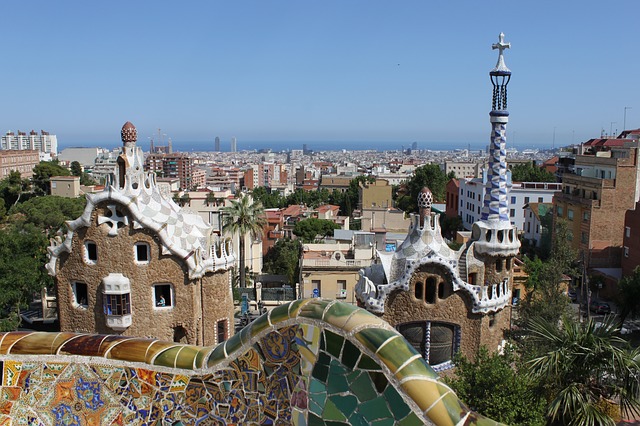
PLAZA DE LA VILA DE GRÀCIA
Si hay un distrito en Barcelona donde las plazas adquieran una relevancia especial, ese es el de Gràcia. No solo por ser un punto de encuentro obligado para la población local, sino también por la historia que atesoran en muchos casos. Por lo tanto, estos lugares es algo que hay que ver en Gràcia sí o sí.
La plaza más importante es la de la Vila de Gràcia, el centro administrativo del distrito. Aunque a lo largo de su historia ha adoptado diversos nombres —se la ha llamado plaza de Oriente, plaza de la Constitución y, hasta 2009, plaza de Rius i Taulet—, este rincón mantiene intacto su encanto, con viviendas construidas entre la década de 1870 y principios del siglo XX. Por algo está incluida en el Inventario del Patrimonio Arquitectónico de Cataluña.
Ubicada entre las calles de Sant Domènech, Diluvi, Mozart y Francisco Giner, es uno de los puntos más concurridos de Gràcia. Su elemento más característico se halla en centro: una torre levantada por Antoni Rovira i Trias, entre 1862 y 1864, con un campanario y un reloj y conocida como Campanario de Gràcia o Torratxa de Gràcia. A finales del siglo XIX, este monumento dio título a dos revistas progresistas de la época.
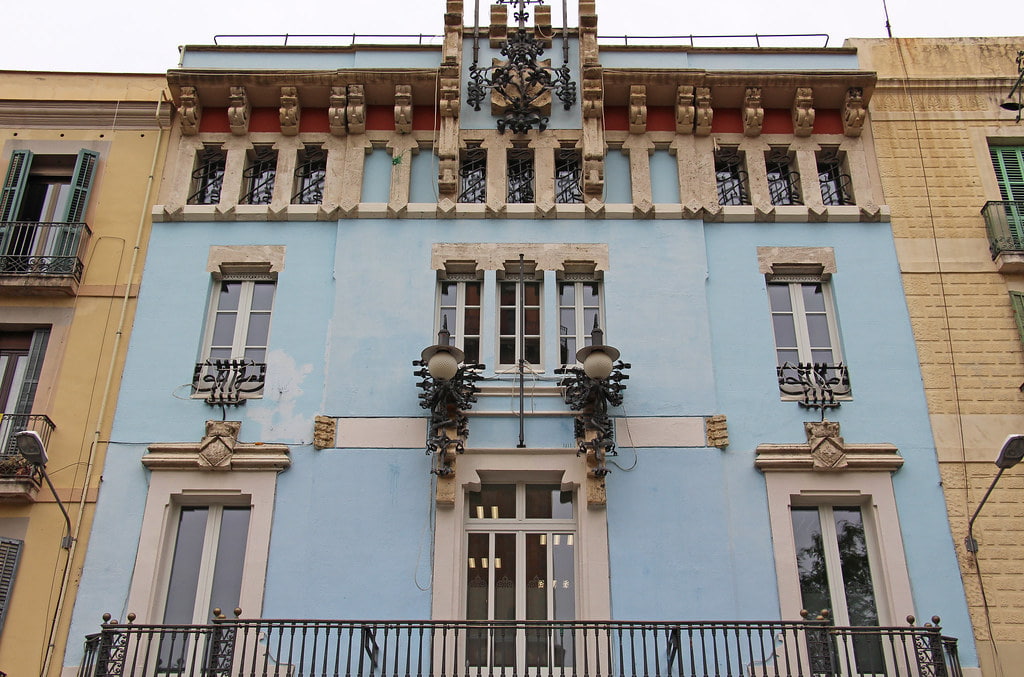
PLAZA DEL DIAMANT
Aunque son muchos los libros inspirados en Barcelona, La plaza del Diamante, de Mercè Rodoreda, es uno de los más populares dentro de la literatura catalana. El título deja claro cuál es uno de los escenarios de la trama. Y te aseguramos que vale la pena dejarse caer por allí. Esta plaza, que data de la década de 1860, acoge diversos restaurantes con terrazas. Además, el subsuelo de este rincón de Gràcia esconde una sorpresa: uno de los refugios antiaéreos que la población civil construyó durante la Guerra Civil (1936-1939) para guarecerse cuando se producían bombardeos aéreos. Sin duda, este es uno de los lugares insólitos para visitar en Barcelona que no te puedes perder.
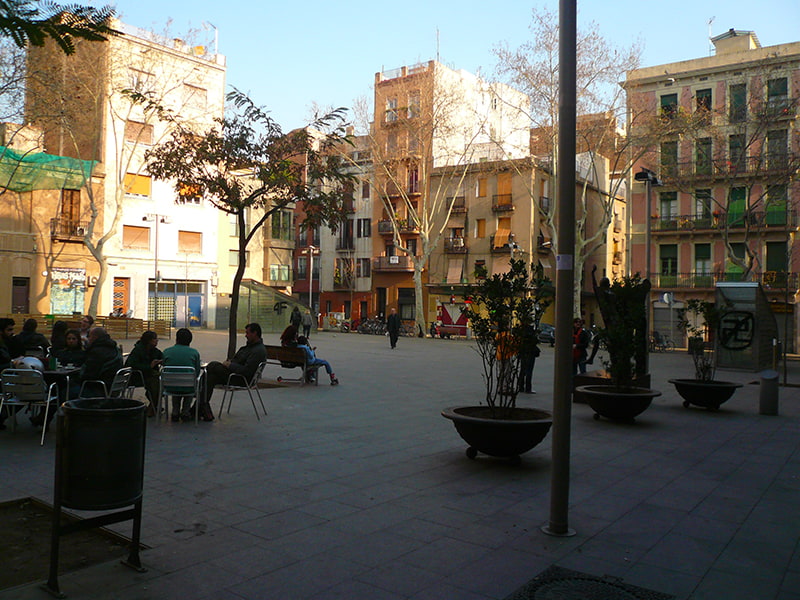
PLAZA DE LA VIRREINA
Urbanizada en 1878 por el arquitecto Josep Artigas, esta plaza arbolada conserva su atmósfera tranquila y vecinal gracias a la presencia de la iglesia de Sant Joan —con una capilla modernista— y a las casas bajas de obreros que aún siguen en pie en uno de sus lados. En uno de los extremos de la plaza, se halla la escultura Ruth, de Josep Maria Camps. Si quieres hacer un alto en el camino durante tu visita por Barcelona, toma asiento en uno de sus agradables bares con terraza. Y si te apasiona el séptimo arte, aprovecha para ver una de las películas que proyectan en el cercano cine Verdi Park, todas en versión original subtitulada en castellano.
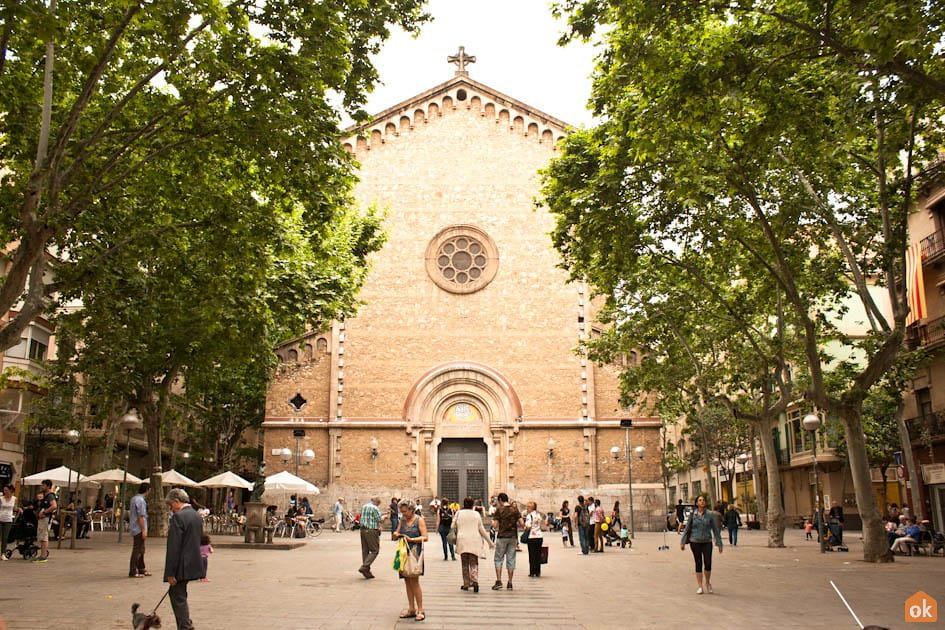
PLAZA DE LA REVOLUCIÓ
Próxima a la plaza de la Virreina, y situada al final de la calle de Verdi, es otra plaza repleta de terrazas y restaurantes. Aunque en sus orígenes llevaba el nombre de la entonces reina de España, Isabel II, en 1868, fecha en que fue destronada, adoptó su denominación actual. A tu llegada, te invitamos a buscar en el suelo unas grandes letras que forman la palabra revolució. Por cierto: en sus laterales, esta plaza cuenta con numerosos restaurantes y una de las mejores heladerías de Barcelona.
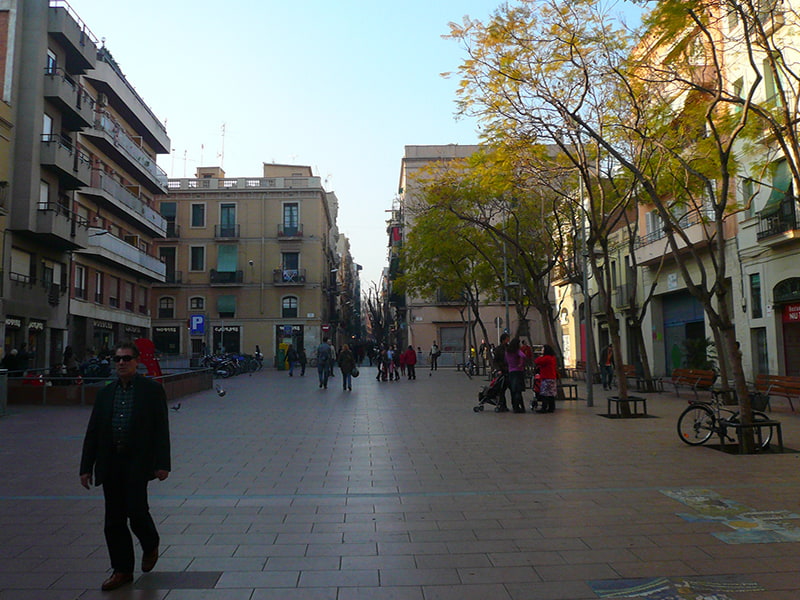
MERCADO DE LA LLIBERTAT
Como ya habrás podido darte cuenta durante este repaso a los lugares que hay que ver en Gràcia, este distrito lleva el espíritu reivindicativo en su ADN. Al nombre de algunos de sus rincones más señeros, se suma el mercado de la Llibertad, uno de los mercados más antiguos de Barcelona. Erigido en 1888 por el arquitecto Miquel Pascual i Tintorer, este mercado de alimentos cobija a sus vendedores bajo una imponente estructura de hierro y ladrillo que merece un poco de atención. Lo encontrarás en la plaza de la Llibertat, 27.
El otro gran mercado de Gràcia —junto con el mercado de Lesseps— está cerrado temporalmente por trabajos de mejora. Se trata del merado de l’Abaceria Central, situado en el número 186 de la Travessera de Gràcia y muy frecuentado por las clases populares del barrio. Mientras se llevan a cabo los trabajos de renovación, cuya finalización está prevista para 2022, el mercado se ha trasladado provisionalmente al paseo de Sant Joan.
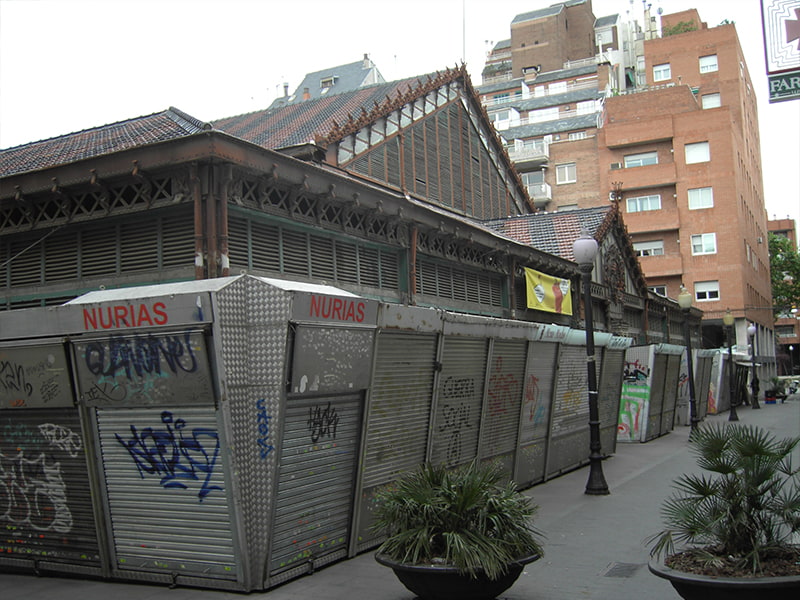
VIADUCTO DE VALLCARCA
Conocido popularmente como el puente de Vallcarca, este viaducto se localiza en el barrio de Vallcarca y els Penitents. Inaugurado en 1923, conecta la avenida de la República Argentina con la plaza de Mons, salvando la avenida de Vallcarca. En la actualidad, está catalogado como Bien Cultural de Interés Urbanístico en el Catálogo de Patrimonio Arquitectónico de Barcelona.
Y un último apunte antes de acabar nuestra lista de lo que hay que ver en Gràcia: si durante tu ruta te apetece reponer fuerzas, echa un vistazo a los mejores sitios para comer en Gràcia.
Por supuesto, también esperamos tus aportaciones para ampliar nuestras propuestas. ¡No dudes en mandarnos tus sugerencias para visitar en Gràcia!
